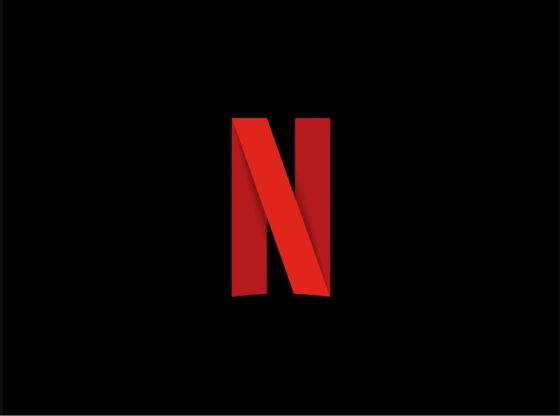
F. Scott Fitzgerald’s “The Great Gatsby” is considered to be one of the most celebrated novels in the realm of American literature; it has been worshipped ceaselessly by literary nerds and mere dabblers alike since it was first published in 1925. With the advent of the “hipster age,” “The Great Gatsby” has seen a revival among the youth of today, and the book’s reborn popularity has proven its value once again. This makes it the perfect time for the magic of “Gatsby” to make a transition into the world of film—an endeavor taken on by writer and director Baz Luhrmann, whose film adaptation of the iconic novel was released last Friday.
The film hugs the curves of Fitzgerald’s storyline incredibly tightly, never straying significantly from the plot laid out in the novel. “Gatsby” tells the story of Nick Carraway (Tobey Maguire, “Spider Man”), a young bondsman trying his hand at finance in 1920s New York. As the summer wanes on, Carraway discovers that he is living right next door to a local celebrity of sorts—Jay Gatsby (Leonardo DiCaprio, “Inception”), an Oxford man from a prestigious family (sadly, all dead now) who is known for opening his extravagant home to the public for outrageous parties that put all other manners of frivolity to shame.
Yet not much else is known about Mr. Gatsby, and as the party-goers speculate on his possible status as a spy or a murder convict, Carraway finds his way into Gatsby’s confidences and learns they are connected in more ways than one. Thus ensues a summer of secrets, lies and utter extravagance as Gatsby attempts to rekindle a long lost love affair with Carraway’s cousin, Daisy Buchanan (Carey Mulligan, “Drive”).
The only significant plot change made within the film is the framing of Nick Carraway as its narrator. In order to facilitate Carraway’s storytelling, he is depicted discussing his summer with Gatsby with a therapist, recounting the tale to him and eventually writing it out word by word to help him cope. Though this aspect of the story was not included within the novel, it is somewhat necessary in the film to give Carraway’s narration purpose. The technique also allows for some interesting cinematographic effects as the words are seen overlaid with footage, seemingly departing from the screen and joining the world of the viewer. This is one aspect that could be intriguing to see in the 3D version of the film, but there are few other elements that would make the adaptation more dazzling than it is in 2D.
In fact, the cinematography accounts for much of what makes this film great, as the brilliant sheen of the picture transports viewers to a different time and place. Full of dazzling colors and bright hues, it is a wondrously mystical embodiment of the Jazz Age in which Fitzgerald’s characters live. The use of contrast between these luminous, effervescent colors and the deeply muted hues used in scenes of despair or conflict also bring Fitzgerald’s symbolism to life, creating a visual representation of the novel’s implicit meanings. Luhrmann also makes sure to include and visually emphasize important symbols from the book, never allowing one bit of Fitzgerald’s masterpiece to be lost in the fray. Lovers of the novel will immediately recognize the flashing green light, the city of ash, Dr. Eckleberg’s spectacles and Gatsby’s audacious yellow car, symbols from the book that have been given a home on the silver screen.
One directorial choice that was questioned by many was the decision to use modern music in certain sequences of the film, a supposed attempt to relate the folly of the Jazz Age to the “party mentality” of youth today. Music from the time period is also included, but most of the scenes depicting Gatsby’s parties include modern hip-hop and rap music. Generally, this element doesn’t detract from the film, but there are some instances in which it doesn’t work as well as intended. Viewers shouldn’t let this deter them from seeing the film, though —the music is never distracting and doesn’t change the meaning of the film as a whole, especially since the costuming and sets make it perfectly clear this is a period piece. With flapper dresses, bow ties and bobs galore, this film is the 1920s incarnate.
In terms of acting, the film was cast nearly perfectly. Leonardo DiCaprio is sensational as always in the role of Gatsby, emulating the mysterious regality of the character while simultaneously embodying his fervent desperation to be reunited with his lost love. Mulligan plays her part beautifully as well, and viewers will be utterly enchanted by her ethereal depiction of the vapid Daisy (“a beautiful little fool”). The onscreen chemistry between the two is undeniable, all but forcing audiences to root for their love affair despite its obvious futility. Tobey Maguire’s performance as Nick Carraway is less emotionally charged, but his role as the protagonist and narrator of the story is absolutely essential, and Maguire brings the hero-worshipping nature of Carraway to the screen with skill.
Luhrmann’s version of “The Great Gatsby” does what other adaptations have been unable to in that it translates the entirety of Fitzgerald’s novel to the screen, symbolism and all. By deftly utilizing cinematography, color and music, Luhrmann has breathed life into the implicit meanings found within the novel. The impeccable casting has also allowed Fitzgerald’s characterization to truly blossom, and viewers will come away understanding and considering “The Great Gatsby” in a different light. The result is a film that Fitzgerald lovers and newcomers alike will be able to appreciate. It’s true that adaptations have been attempted many times before, but can you repeat the past? Why, of course you can. Especially when you do it like Baz Luhrmann.











